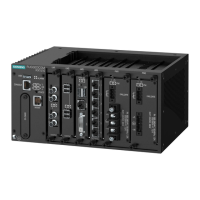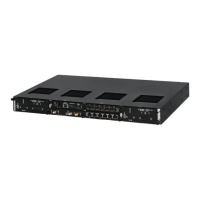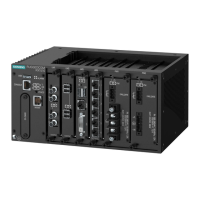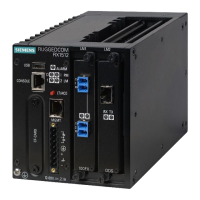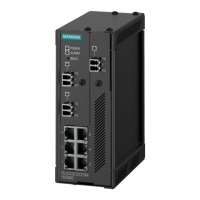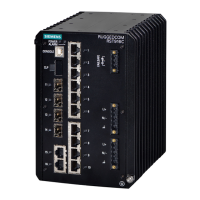Chapter 5
Setup and Configuration
RUGGEDCOM ROX II
User Guide
268 Adding an SNMP Target Address
Parameter Description
enabled Default: true
Enables/disables this specific target.
Target Address Synopsis: The ip-address type represents an IP address and is IP version neutral.
The format of the textual representations implies the IP version.
An IPv4 or IPv6 address for the remote target.
Trap Port Synopsis: The port-number type represents a 16-bit port number of an Internet
transport layer protocol such as UDP, TCP, DCCP, or SCTP. Port numbers are assigned
by IANA. A current list of all assignments is available from <http://www.iana.org/>. Note
that the port number value zero is reserved by IANA. In situations where the value
zero does not make sense, it can be excluded by subtyping the port-number type. In
the value set and its semantics, this type is equivalent to the InetPortNumber textual
convention of the SMIv2.
Default: 162
The UDP Port for the remote target to receive traps on.
Security Model Synopsis: v1, v2c, v3
Default: v2c
The SNMP security model to use: SNMPv1, SNMPv2c, or USM/SNMPv3.
User Name The user name to be used in communications with this target.
Security Level Synopsis: noAuthNoPriv, authNoPriv, authPriv
Default: noAuthNoPriv
The SNMP security level:
• authPriv: Communication with authentication and privacy.
• authNoPriv: Communication with authentication and without privacy.
• noAuthnoPriv: Communication without authentication and privacy.
Control Community Restricts incoming SNMP requests from the IPv4 or IPv6 address associated with this
community.
Trap Type List Default: snmpv2_trap
Selects the type of trap communications to be sent to this target.
Inform Timeout Default: 6000
The timeout used for reliable inform transmissions (seconds*100).
Inform Retries Default: 3
The number of retries used for reliable inform transmissions.
Target Engine ID Synopsis: A list of colon-separated hexa-decimal octets e.g. '4F:4C:41:71'. The
statement tailf:value-length can be used to restrict the number of octets. Note that using
the 'length' restriction limits the number of characters in the lexical representation.
Default: Empty string
The target's SNMP local engine ID. This field may be left blank.
6. Click Commit to save the changes or click Revert All to abort. A confirmation dialog box appears. Click OK
to proceed.
7. Click Exit Transaction or continue making changes.
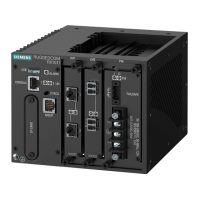
